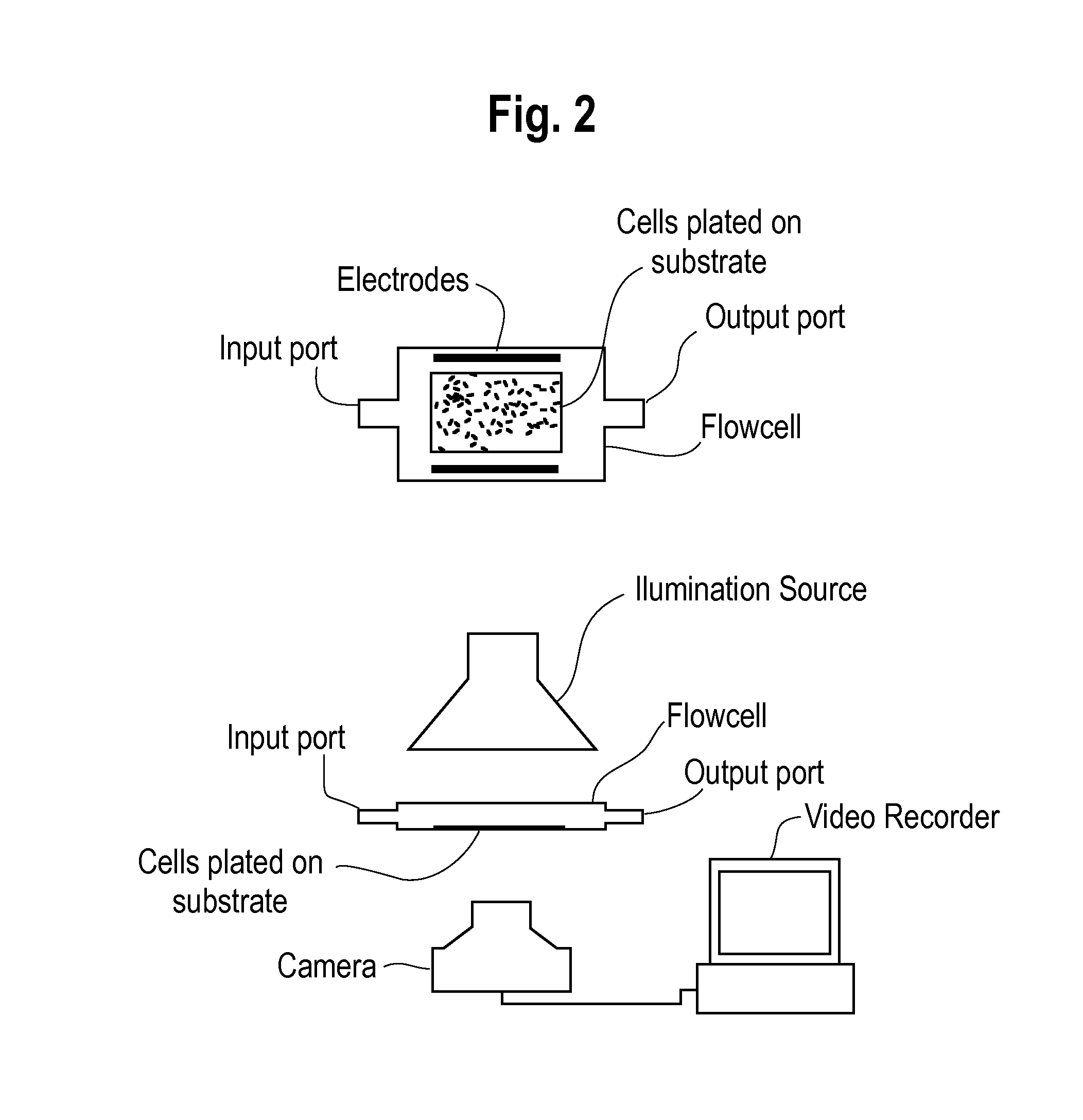High throughput, optical method and system for determining the effect of a test substance on non-contiguous living cells
a test substance and living cell technology, applied in the field of methods for determining the effect of substances, can solve the problems of difficult to maintain the current methods for obtaining intracellular recordings, the difficulty of obtaining intracellular recordings, and the time-consuming and technical complexity of intracellular recording techniques used in vitro
- Summary
- Abstract
- Description
- Claims
- Application Information
AI Technical Summary
Benefits of technology
Problems solved by technology
Method used
Image
Examples
Embodiment Construction
[0049]The present invention provides a rapid, non-invasive, and efficient method for determining the effect of a test substance (e.g., compounds or drugs) on excitable living cells. The inventive method includes a method for measuring a response of a plurality of cells to a test substance by:
[0050](1) providing a digital video recording of a plurality of cells prior to exposure to a test substance and a digital video recording of the plurality of cells after exposure to a test substance, each of the video recordings comprising a plurality of video still frames, each of the video still frames comprising a plurality of pixels,
[0051](2) selecting one or more cellular regions from each video still frame from the video recording of the plurality of cells prior to exposure to a test substance,
[0052](3) selecting a reference frame from among the video still frames of the video recording of a plurality of cells prior to exposure to a test substance and from among the video still frames of t...
PUM
| Property | Measurement | Unit |
|---|---|---|
| digital imaging | aaaaa | aaaaa |
| transparent | aaaaa | aaaaa |
| semi-transparent | aaaaa | aaaaa |
Abstract
Description
Claims
Application Information
 Login to View More
Login to View More - R&D
- Intellectual Property
- Life Sciences
- Materials
- Tech Scout
- Unparalleled Data Quality
- Higher Quality Content
- 60% Fewer Hallucinations
Browse by: Latest US Patents, China's latest patents, Technical Efficacy Thesaurus, Application Domain, Technology Topic, Popular Technical Reports.
© 2025 PatSnap. All rights reserved.Legal|Privacy policy|Modern Slavery Act Transparency Statement|Sitemap|About US| Contact US: help@patsnap.com



